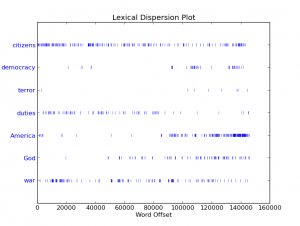Trading Consequences’ First Year
Co-Authored with Beatrice Alex
Trading Consequences is a Digging Into Data funded collaboration between commodity historians, computational linguists, computer scientists and librarians. We have been working for a year to develop a system that will text mine more than two million pages of digitized historical documents to extract relevant information about the nineteenth-century commodity trade. We are particularly interested in identifying some new environmental consequences of the growing quantity of natural resources imported into Britain during the century.
During our first year we’ve gathered the digitized text data from a number of vendors, honed our key historical questions, created a list of more than four hundred commodities imported into Britain, and developed an early working prototype. In the process we’ve learned a lot about each others’ disciplines, making it increasingly possible for historians, computational linguists, and visualization experts to discuss and solve research challenges.
Our initial prototype has limited functionality and focuses on a smaller same of our corpus of documents. In the months ahead it will then become increasingly powerful and populated with more and more data. Late last year, we completed the first prototype. Here’s a picture of the overall architecture:


